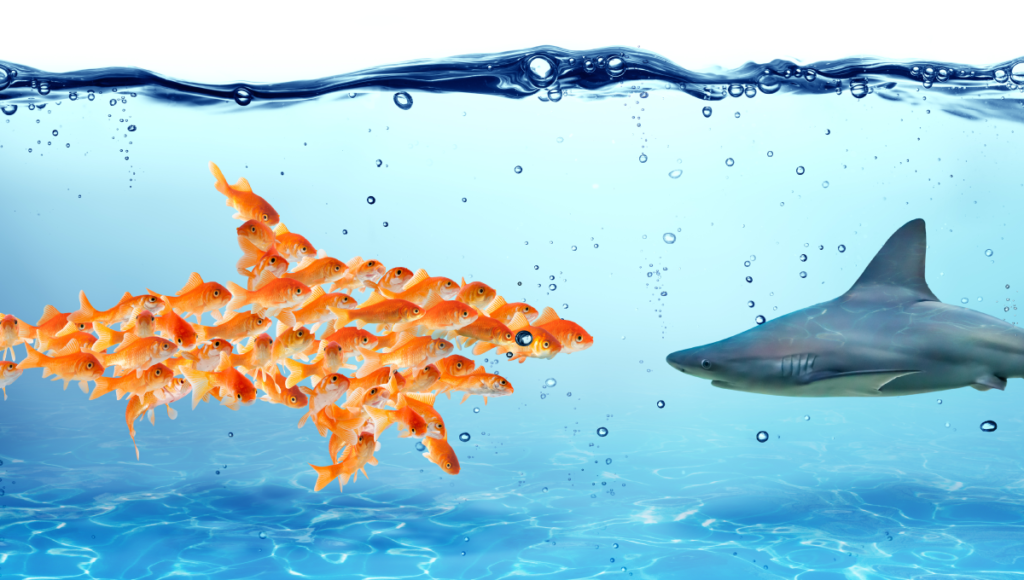Nature Knows: Teamwork

What makes a team? Is it a bunch of rah-rah and pom-poms and look-alike costumes? Is it always and completely believing the same thing? Is it everyone having one task and one task only?
Let’s ask Nature what she knows about teamwork.

How about the lowly Canadian Goose and other birds as they migrate from North to South and back again each year. Their team is a constantly shifting arrow meant to share the burden of flight. A leader is not a full-time leader, but the lead fowl that has the toughest job in slicing the wind and being a foil. As this leader tires, another will fly up to that lead position, and take on the burden of leadership. This is very interesting. The leadership is flexible, maybe even shared. At the very least, the leader is comfortable stepping aside and letting others lead for a time.
Do we do this in our teams? Not so much. Leaders often lead, and set the path, and assign and compile task progress. We typically choose each person for their expertise, often a very specific expertise, and assign them a role that is, possibly, stagnant over the life of the project or life of the team. In addition, we have lost the art of being “generalists” so we have trouble relating each task/job/position to the others. So much so that many job meetings are about people reporting out their work, vying for a moment in the limelight and tuning out when others are speaking. Successful teams have meetings that synergize the information across the roles, and only the most successful teams use their interactions to build upon that aggregate information.
How about wolves and their hunting process? There is an alpha in most wolf packs, but that alpha is not always in the front or the lead hunter. The roles of the pack shift with age and experience, as well as with type of prey and the physical environment in which the prey is being hunted. Young wolves watch and learn, implying a mentorship of sorts. All of these approaches show a flexibility in the team, an awareness of situation, as well as a shared goal to which each team member can respond as needed to ensure success.

And then we can learn from the example of schools of fish. Many fish are patterned or colored in a way to confuse predators. A big spot near the tail that can look like an eye means a larger fish will grab for the tail, and the smaller fish can zip away, for example. In addition, schools of fish move in a way to protect and deflect the interest of predators. The team works together for the safety of all the fish in the school, and teams are more productive when the team members feel protected and safe in the work. Often in the teamwork I have been associated with, one objective takes precedence and the team is more accurately working on the needs of one, or only a few, more powerful, team members. This can be debilitating.
To summarize:
From geese we learn that leadership can be shared.
- To apply this we need to develop trust, and we need to continually confirm with the team the objectives of the work.
- Solid mentorship programs are a must, to build the bench and strengthen the team.
From wolves we learn that great leaders synergize.
- We should strive to use the whole team to inform success rather than assigning roles that can silo and stagnate thought processes.
- Again, mentorship is key, as well as the ability of the leader to step back and see who can fill what role well in the moment at hand. Hurrah for the generalist!
From fish we learn that the team functions as a whole to benefit the whole.
- This means we need to engage in discussions and discovery, with a goal of consent, so that every move is in the direction the team supports.
- The “soft-skill” of helping people feel safe is vital. They will offer more creative solutions, and take the needed risks to innovate and excel.
Nature informs business and planning strategies well, and we must only look to the lessons she illustrates all around us. How are you applying these and other lessons of teamwork in your business, volunteering, and life 2bgreener? Post a comment, share an idea, and help to make more people aware of all that Nature Knows.
Jodi
1 Like this post (no login required)